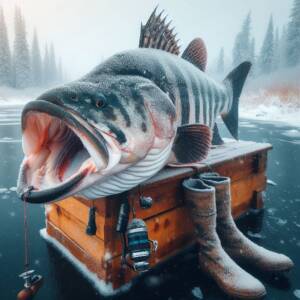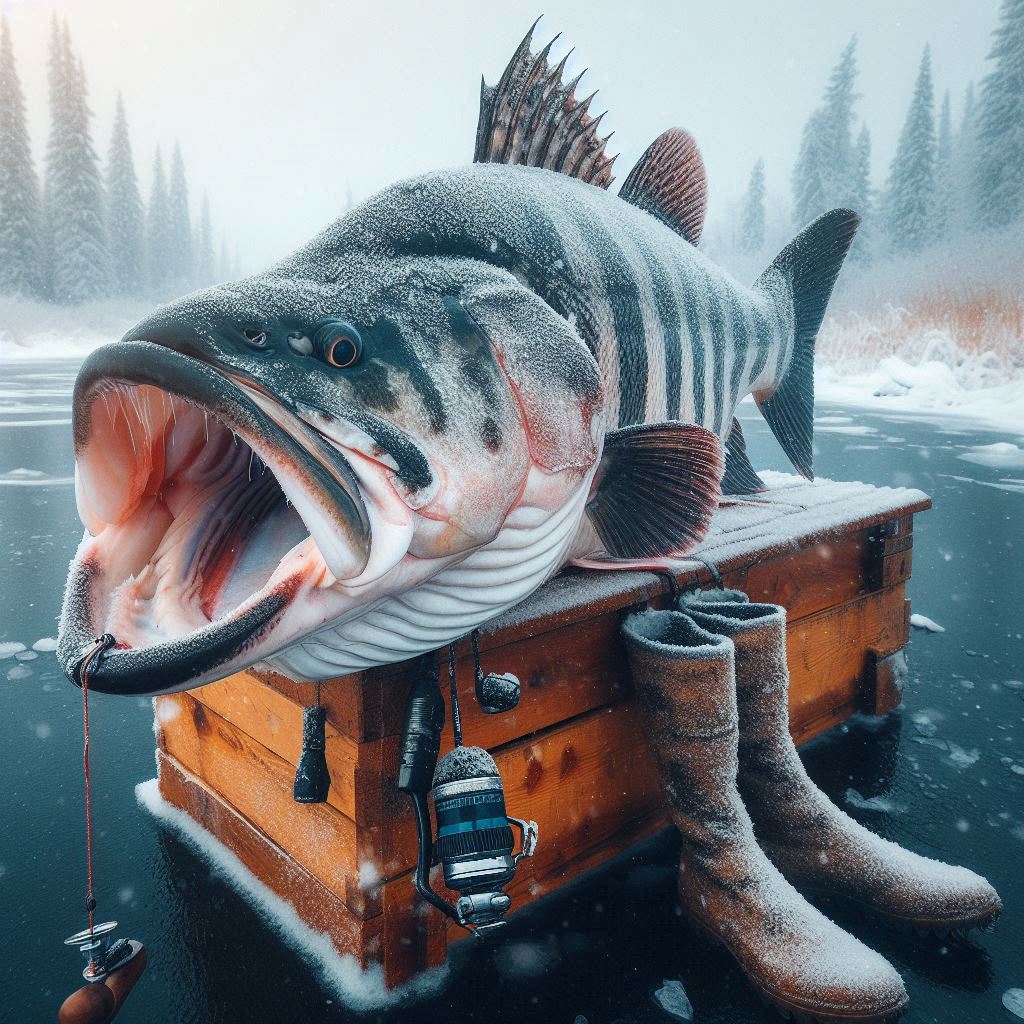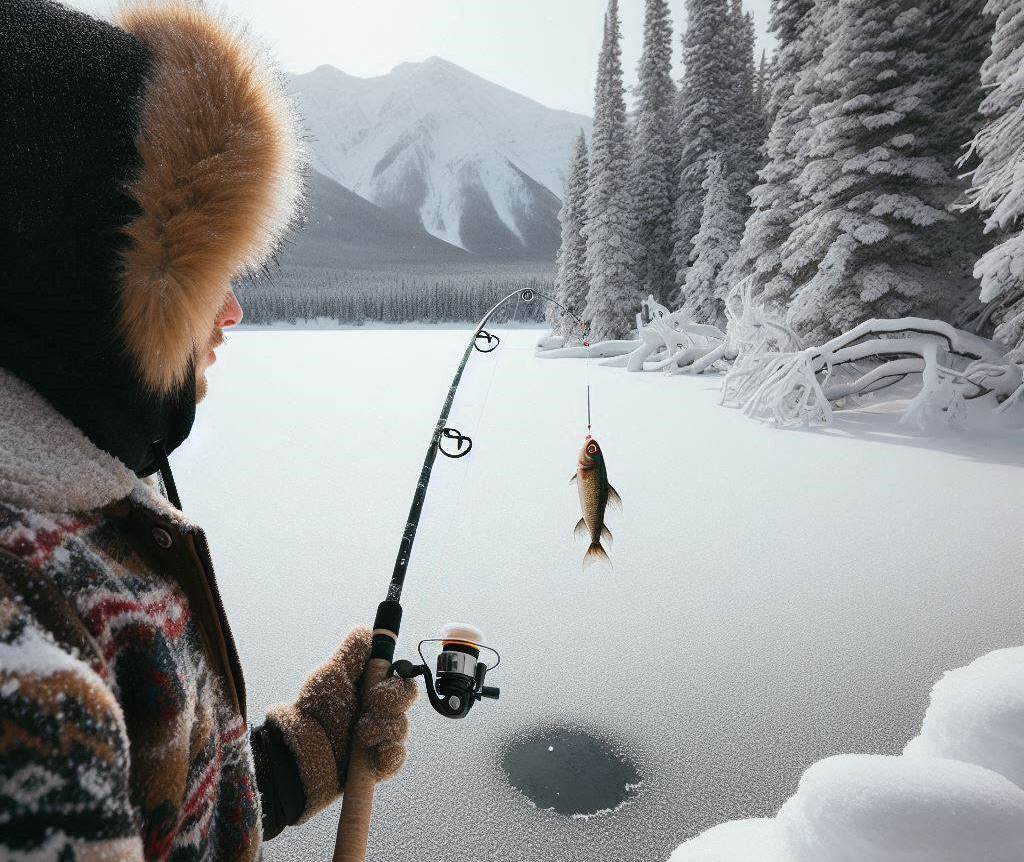Winter fishing for large fish is an exciting activity that is attracting more and more anglers. Trophy fish have always been a target for many fishermen, but the winter season opens up new opportunities for hunting these large specimens. In this article, we will explore the main methods and techniques of winter fishing for large fish, learn about the necessary equipment and preparation that will help achieve the desired result. Feel the adrenaline of a trophy catch and immerse yourself in the fascinating world of winter fishing for large fish with us.
Contents
- 1. Preparation for Winter Fishing for Large Fish: Equipment and Strategy
- 2. Secrets of Successful Winter Fishing for Large Fish: Smart Bait Selection
- 3. Safety Rules During Winter Fishing for Large Fish: What You Need to Know and Consider
1. Preparation for Winter Fishing for Large Fish: Equipment and Strategy
Winter fishing for large fish is an exciting spectacle that requires specific preparation and equipment. For successful trophy fishing, you will need the following gear:
- Ice auger – this tool will allow you to drill a hole in the ice for fishing. It is important to choose a high-quality and durable tool to ensure safety when using it.
- Bait – to attract large fish, you need to use appropriate bait. It is recommended to use effective bait that works well in cold weather.
- Maggots – this is a popular type of bait that can attract the attention of large fish. Maggots are made from artificial materials and can come in different shapes and colors.
A successful winter fishing strategy for large fish involves certain features:
- Choosing a location – it is necessary to find a spot on the ice where fish tend to gather, seek food, or areas with warmer water. These can be holes, currents, or areas with old vegetation where ice formations occur.
- Depth and ice thickness – determine the optimal depth and ice thickness for your fishing. Remember that large fish are more often found at depth, and the ice thickness should be at least 10 cm for safety.
- Patience and persistence – winter fishing for large fish can be a long process, so it is important to have patience and persistence. Be prepared to spend many hours on the ice, even if the results are not immediate.
Winter fishing can become even more exciting thanks to the opportunity to catch trophy fish. But success requires experience and knowledge of effective techniques. One of the key aspects of this process is choosing the right fishing spot. This plays an important role since trophy fish in winter are usually found in specific areas that provide optimal conditions for their stay and feeding.
One of the most effective ways to attract trophy fish during winter fishing is to use bait. Bait helps attract the fish’s attention and increase the chances of a successful catch. There are many different types of bait you can use, such as lures, jigs, and other imitations. It is important to choose bait that corresponds to the fish’s activity and the specific conditions of the water body. A smart combination of bait and its proper use can ensure greater success in winter fishing for trophy fish.
Another important aspect of winter fishing for trophy fish is choosing the right fishing tactics. One of the most common methods is ice fishing. For this, you need to have specialized equipment, such as fishing rods with special baskets that ensure safety while ice fishing. It should be noted that the choice of fishing tactics also depends on the specific trophy fish you are interested in. For example, fishing with live vegetation is excellent for catching predatory fish, while jigging may be more effective for catching trophy perch.
2. Secrets of Successful Winter Fishing for Large Fish: Smart Bait Selection

Choosing the right bait is one of the most important components of successful winter fishing for large fish. Depending on the prevailing fishing conditions, consider several different types of bait:
- Silicone lures: These baits are usually made in the form of frogs, worms, or grubs. They are elastic and provoke an aggressive reaction from the fish, increasing the chances of a bite. The great advantage of silicone lures is their durability and prolonged shape retention.
- Metallic lures: These baits are usually made in the form of spinners or wobblers. They have a shiny surface that attracts the fish’s attention. Metallic lures are suitable for active fishing when the fish aggressively responds to the movement of the bait.
- Natural baits: These baits are typically used for winter fishing in rivers or lakes with linear ice cover. These can include micro-spoons, thawed shrimp, pieces of meat, or fish. These baits have a natural scent, which helps attract the fish’s attention and increases the likelihood of a bite.
3. Safety Rules During Winter Fishing for Large Fish: What You Need to Know and Consider
During winter fishing for large fish, such as trophy specimens, it is important to follow special safety rules. Adhering to these rules will help avoid danger and preserve health.
Basic safety rules:
- Before going on the ice, make sure it is safe. It is recommended to use designated areas officially approved for fishing. Also, avoid areas with moving currents and regions where the ice is covered with snow.
- Always carry safety equipment: a chest pendant that measures ice thickness, a safety harness for emergency situations, and a flotation device for signaling an emergency.
- It is also important to consider weather conditions and check the forecast before going on the ice. Wind, snowstorms, and temperature fluctuations can lead to ice breaking and the formation of cracks, threatening safety.
Knowing and following these rules will be a reliable guarantee of safety during winter fishing for large fish. Remember, safety always comes first!


Leave a Comment
Your email address will not be published. Required fields are marked *